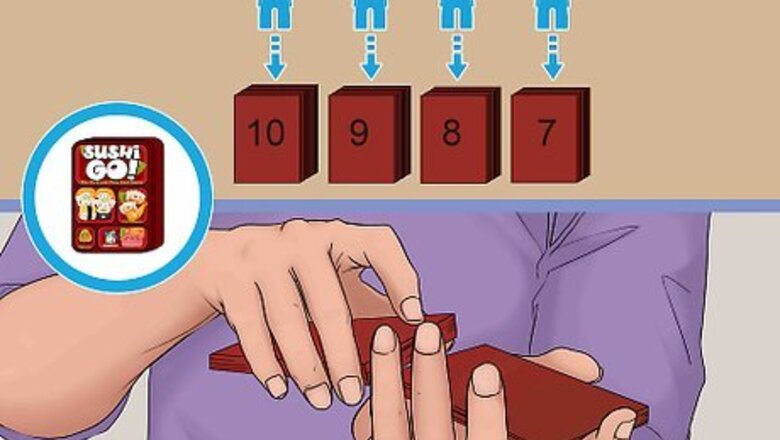
views
Starting the Game
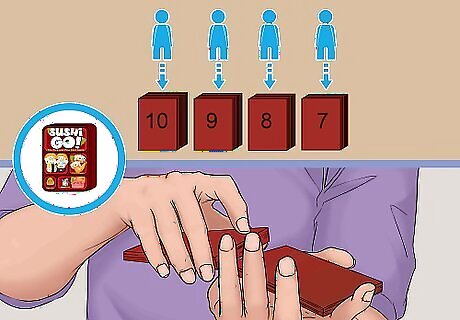
Deal cards out to each player. The amount of cards you deal depends on how many players you have. The game is meant for 2 to 5 players. For a standard 2-player game, each player gets 10 cards. For each additional player, deal 1 less card. Deal out 9 cards in a 3-player game, 8 cards in a 4-player game, and 7 cards in a 5-player game. Keep your cards face down so the other players can’t see them.
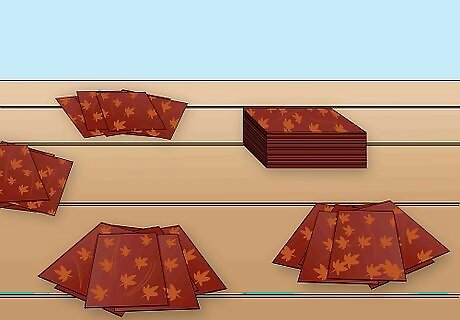
Place the remaining cards face down in a center pile. Don’t look at these cards yet. You won’t use them during a round of Sushi Go. These cards are dealt out between rounds so you can play again. An optional way to play is to shuffle the dealt cards back into the deck after each round.
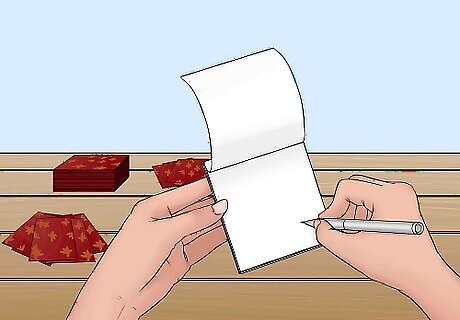
Choose a scorekeeper and give them paper and a pencil. Scores are tallied after the end of each round. Pick someone who doesn’t mind doing a little math. At the end of each round of Sushi Go, that person needs to look at the cards each person played and add up their values according to the scoring rules. The math involved is simple and all the cards are labeled, so following along with the game isn’t too difficult. You can use your phone as a notepad, since it's just simple arithmetic.
Completing a Round
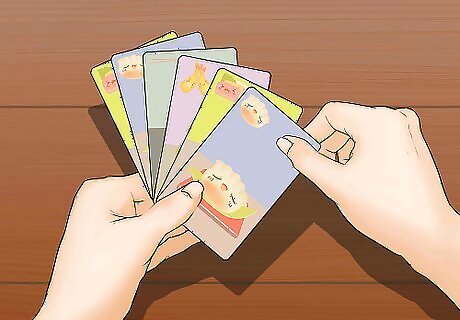
Choose a card to keep and reveal it after everyone has picked. Look at your hand and select a card you wish to keep. Set the card face down in front of you. With some exceptions, the card will stay there until the round ends. Once everyone has chosen a card from their hand, flip the selected cards over to reveal them. The card you choose depends on your unique strategy and the sushi available in your hand. Get familiar with the scoring rules before you begin in order to make the best choice. Grabbing cards usually nets you points in some way.
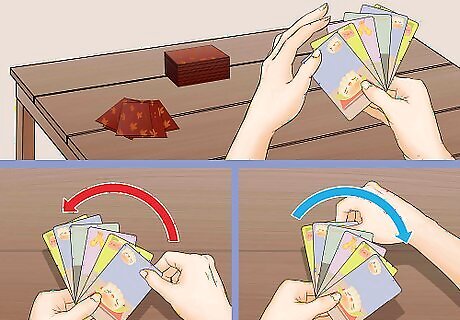
Pass your remaining hand to the player on your left. To prevent the other players from seeing these cards, place them face down on the table. Have the player on your right slide their hand over to you. When everyone is ready, pick up your new cards. The remaining hand will have 1 less card. An alternative way to play is to switch the way you pass the cards each round. In a standard game, the cards always go to the left. Try passing them to the right during the second round, for instance.
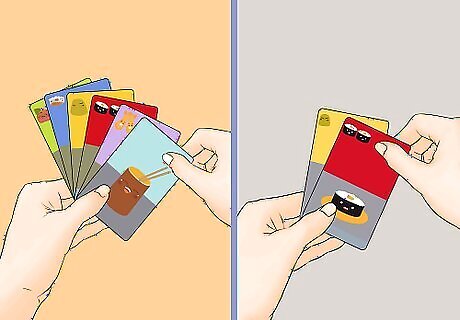
Continue playing until you run out of cards. Sushi Go is a simple game of picking and passing cards. Each time you pass the cards, you end up with a smaller hand. Eventually, each player will have 1 card left and have no choice but to play it. Every time you select a card, place it in front of you and flip it over after everyone else has chosen a card. Keep all of these cards until the end of the round.
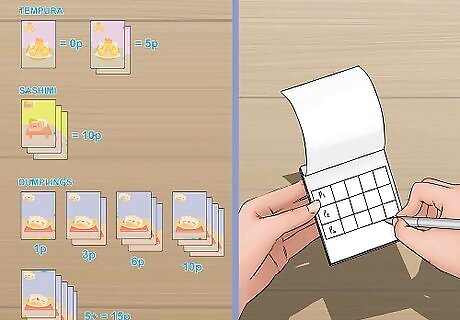
Score the cards by adding up their card types and values. Each type of sushi, from maki rolls to nigiri, nets you a different amount of points. Read the scoring rules to determine how many points each type is worth. Write down how many points each player earned and save the totals until the end of the game. Only sushi and dumpling cards score points during the round. Any unused wasabi or chopstick cards are worth 0 points.
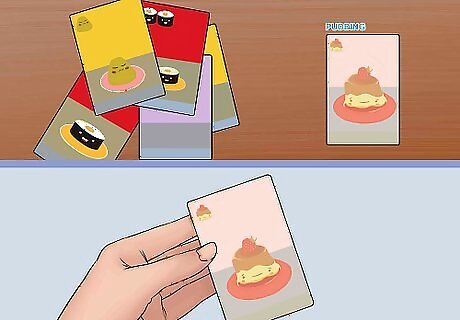
Discard all of the played cards except the pudding cards. Gather up all of your sushi, dumplings, and other cards. Leave any pudding cards you played during the round. Like a true dessert, you have to wait until the end of the game to enjoy them. Set the gathered cards in a face up pile next to the remaining deck.
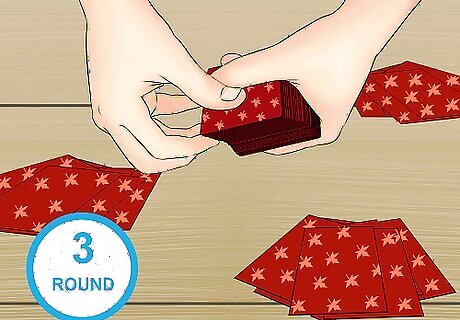
Deal cards and play again for 3 rounds total. Each game of Sushi Go consists of 3 rounds. You deal the same amount of cards per player each round. Continue picking and passing cards to try to score as many points as you can. At the end of the third round, the person with the most points wins! After the final round, be sure to add up the number of pudding cards each player has and include them in the final score.
Formulating a Strategy
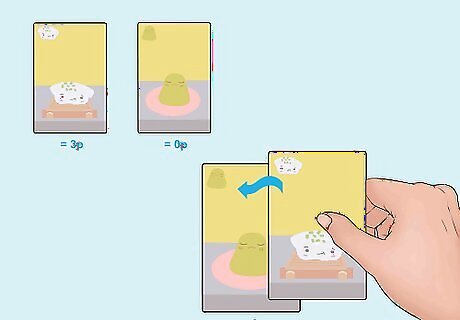
Play a wasabi card to score triple points on a future turn. Wasabi is a special score multiplier card that can only be used on nigiri sushi. When you pick a wasabi card, place it in front of you like any other card. Pass the rest of your hand as you normally would. Then, when you find a nigiri card you like, place it on top of the wasabi for extra points. Squid nigiri, for example, is worth 9 points with wasabi, but only 3 points without it. If you have a wasabi card face up, the next nigiri you take has to be placed on top of it. For instance, you can’t place an egg nigiri down, then wait to get a better card. The egg nigiri has to be placed on the wasabi. You can have as many wasabi cards as you like, but remember that unused wasabi isn’t worth any points at the end of a round.
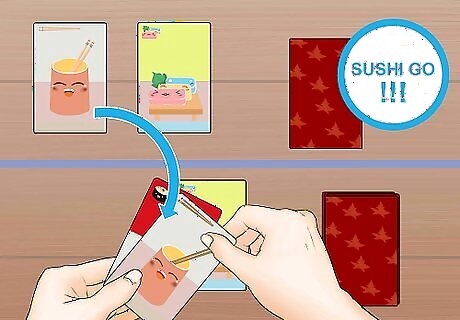
Take 2 sushi cards on a future turn if you play a chopstick card. A chopstick card is like an extra turn. When you wish to use the chopstick card, call out Sushi Go after the other players have chosen their cards. Choose another card in your hand to play. Put the chopstick card back in your hand so other players have a chance to use them. If you have multiple chopstick cards face up in front of you, you are only able to use 1 per turn. Like wasabi, chopstick cards are worth 0 points at the end of a round. Make sure you use them during the round to rack up points.
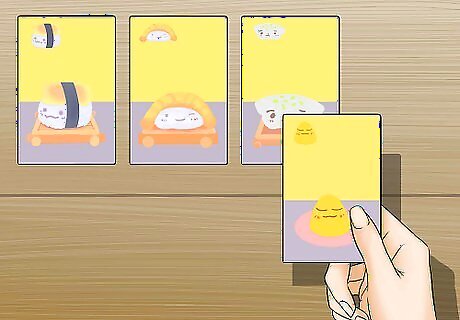
Select different types of nigiri to score a set amount of points. You can pick up 3 different types of nigiri in Sushi Go. The best type to get is squid, which is worth 3 points. Salmon nigiri is worth 2 points each, while egg nigiri is worth 1 point. You get points for each piece of nigiri you have at the end of the round, so nigiri is the most consistent way to score points. Don’t forget the wasabi! Each nigiri on a wasabi card is worth triple points. Squid becomes 9 points, salmon is worth 6, and egg is worth 3.
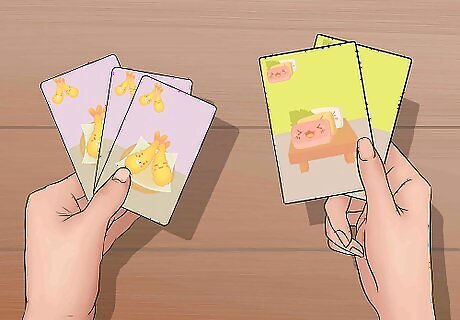
Tempura and sashimi can be risky. Tempura and sashimi only count for points if you pick up matching cards during a round. You need 2 tempura cards or 3 sashimi cards. This makes chasing them a little risky, since these cards are in limited supply and other people will be looking to match them as well. These cards are worth more than nigiri, but you have to use multiple turns before they have any value. It’s a gamble that may not be worth it if you have wasabi or other valuable cards to play.
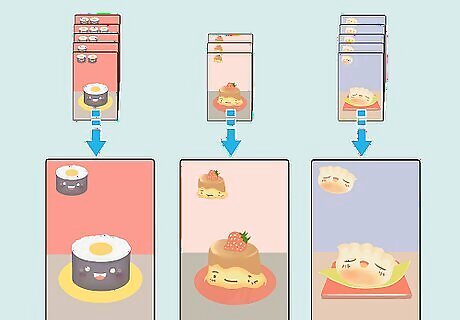
Watch what your opponents eat. The remaining cards types are dumplings, maki rolls, and pudding. All of these cards have unique scoring rules. The more dumpling cards you play, the more points you gain. Meanwhile, the player with the most maki rolls at the end of the round gets a bunch of points, and pudding cards come into play a similar way at the end of the game. Of the 3 card types, dumplings are the surest way to get points. Other players may overlook them, making them a sneaky choice for big points. Maki rolls and pudding need to be balanced with your other card selections. If you ignore them, other players take them and gain points. However, you may gain more points by focusing on nigiri and other cards.
Scoring Points
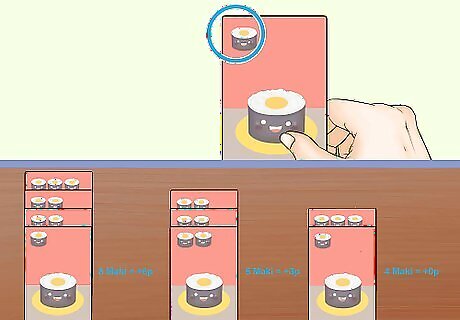
Add up the maki roll icons to see who gets 3 to 6 points. The icons are printed at the top of each maki roll card. Each card has between 1 to 3 icons. The person with the most maki roll icons gets 6 points. The person with the second most icons gets 3 points. In case of a tie, split the points evenly between each person. For instance, the players tied for the most maki rolls each get 3 points. If players tie for first, don’t award any points for second place.
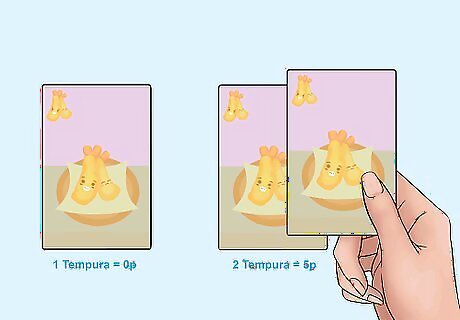
Calculate the number of tempura pairs worth 5 points apiece. Tempura, the fried shrimp cards, only work as pairs. A single tempura card is worth nothing. Every pair you have gets you more points.
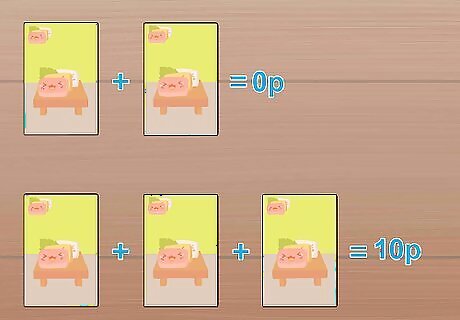
Assign 10 points for every sashimi set of 3. Sashimi cards operate the same as tempura cards. If you have 1 or 2 sashimi, you don’t get any points for them. Every set of 3 nets you a significant amount of points. Getting multiple sets of sashimi per round is tough, so you may wish to focus on other types of sushi.
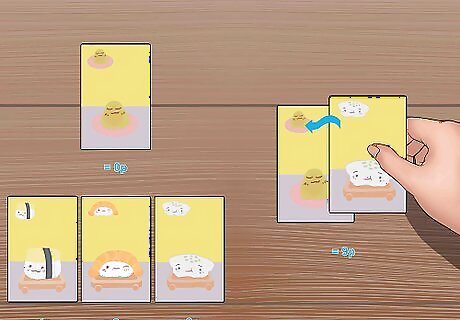
Add up the total score from the nigiri each person has. Include the wasabi cards underneath the nigiri. Remember that squid nigiri is worth 3 points, salmon is worth 2, and egg is worth 1. Triple the nigiri’s point value if it is on top of a wasabi card. Write the total down on a scoresheet to keep track of it each round. Wasabi cards without nigiri aren’t worth anything. Similarly, nigiri is only worth triple points if it is played on top of a wasabi card.
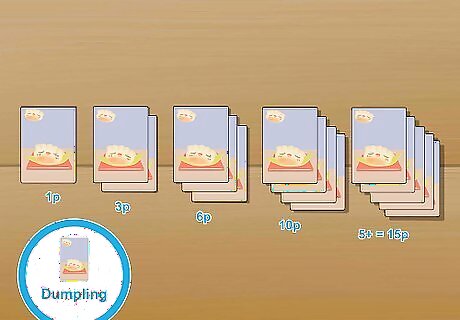
Award an exponential amount of points for each dumpling card. The dumplings are perhaps the trickiest part to figure out. A single dumpling is worth 1 point. Each dumpling after that comes with an extra bonus. The more dumplings you have, the more points you get. For 2 dumpling cards, you get 3 points. If you have 3 cards, you gain 6 points. For 4 cards, the total rises to 10. If you manage to collect 5 or more cards, you earn 15 points.
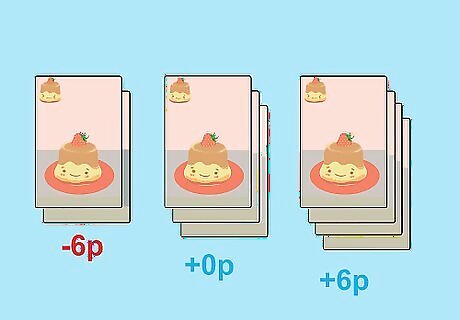
Count the pudding at the end of the game to see who has the most. After you finish the third round, look at how many pudding cards each player has. The person with the most pudding gets 6 points. If you have more than 2 players, the person with the least amount of pudding loses 6 points. If players tie, split the points between them. For instance, if 2 players tie for the least amount of pudding, each player loses 3 points. In case all players have the same number of pudding cards, no one gets points. It’s rare, but it can happen.




















Comments
0 comment